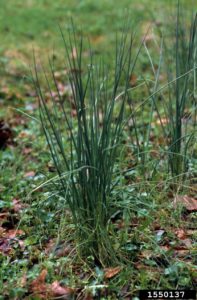Control Wild Onions & Wild Garlic in the Lawn
go.ncsu.edu/readext?750012
en Español / em Português
El inglés es el idioma de control de esta página. En la medida en que haya algún conflicto entre la traducción al inglés y la traducción, el inglés prevalece.
Al hacer clic en el enlace de traducción se activa un servicio de traducción gratuito para convertir la página al español. Al igual que con cualquier traducción por Internet, la conversión no es sensible al contexto y puede que no traduzca el texto en su significado original. NC State Extension no garantiza la exactitud del texto traducido. Por favor, tenga en cuenta que algunas aplicaciones y/o servicios pueden no funcionar como se espera cuando se traducen.
Português
Inglês é o idioma de controle desta página. Na medida que haja algum conflito entre o texto original em Inglês e a tradução, o Inglês prevalece.
Ao clicar no link de tradução, um serviço gratuito de tradução será ativado para converter a página para o Português. Como em qualquer tradução pela internet, a conversão não é sensivel ao contexto e pode não ocorrer a tradução para o significado orginal. O serviço de Extensão da Carolina do Norte (NC State Extension) não garante a exatidão do texto traduzido. Por favor, observe que algumas funções ou serviços podem não funcionar como esperado após a tradução.
English
English is the controlling language of this page. To the extent there is any conflict between the English text and the translation, English controls.
Clicking on the translation link activates a free translation service to convert the page to Spanish. As with any Internet translation, the conversion is not context-sensitive and may not translate the text to its original meaning. NC State Extension does not guarantee the accuracy of the translated text. Please note that some applications and/or services may not function as expected when translated.
Collapse ▲As the weather starts to warm up in the spring, lawn weeds also start to appear. There are lots of them but none are any more dreaded than wild onion or garlic. These weeds are winter perennials. They come up in the late fall and grow through the winter and spring. Bulblets are formed in the late spring and the plant dies back in the summer. These bulblets, however, can last for several years in the lawn or garden.
To control wild onion or garlic, digging them with a trowel might be a suitable option if only a few plants are present. But, pulling by hand leaves bulblets in the ground to grow again. Contrary to popular belief, mowing does not get rid of these weeds although regular mowing can weaken the plants and prevent them from setting seeds.
A post-emergence herbicide is the key to control but it does take more than one application and more than one season to achieve total control. An herbicide containing 2,4-D should be applied in March and again in November. Because plants have a waxy exterior, a spreader sticker added to the spray will help the pesticide to adhere to the leaf. A couple of squirts of dishwashing liquid in the sprayer should do the trick. Another helpful tip is that mowing wild onion or garlic immediately before spraying will improve results. After the herbicide is applied, refrain from mowing for two weeks.
Timing, repeat applications and the correct herbicide are the keys to successfully controlling this familiar weed of the southern garden and lawn.

Wild Garlic in Lawn Photo: Clemson University – Cooperative Extension




